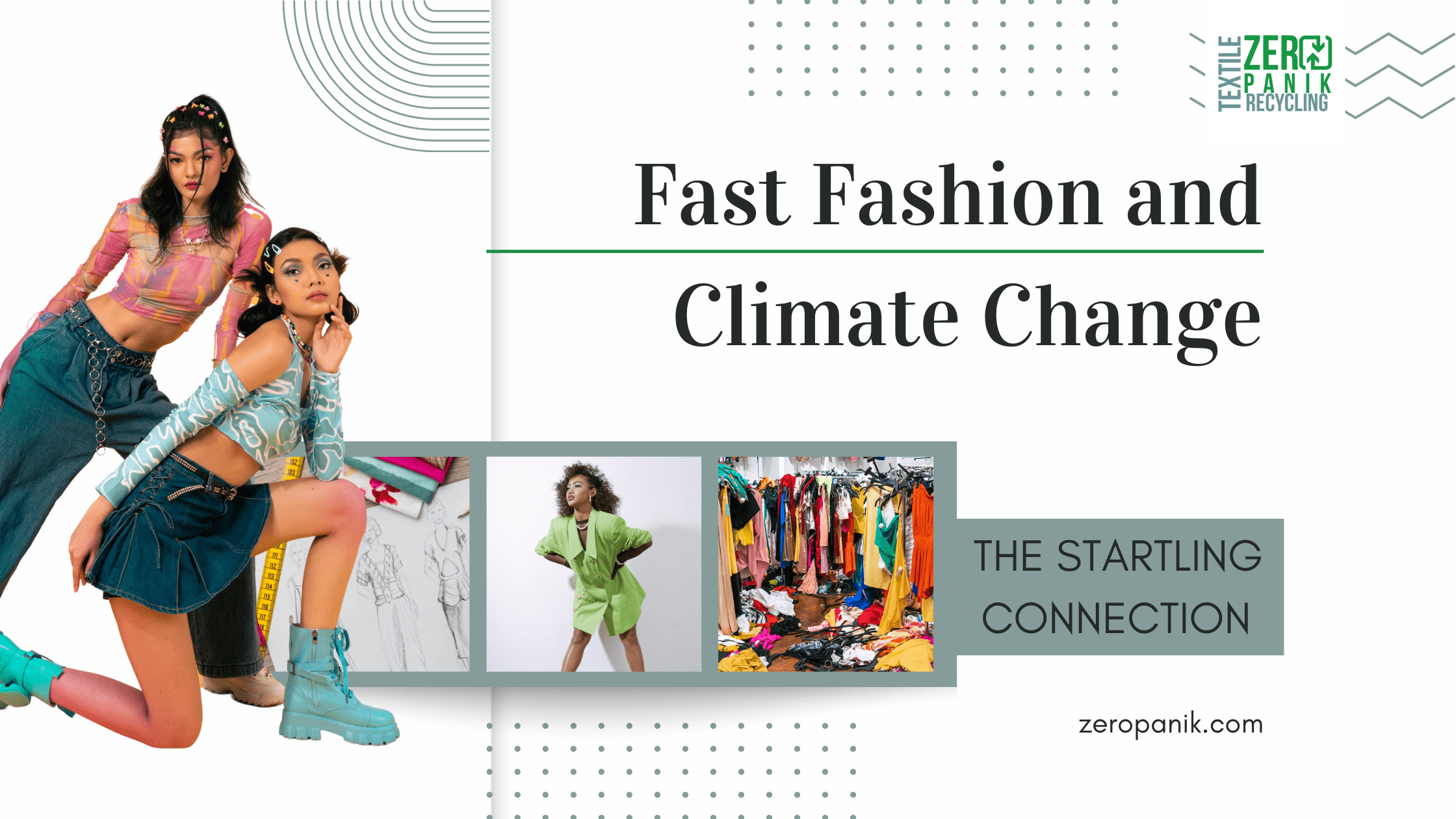
Introduction
Climate change is one of the most pressing issues of our time. And yet, many people are still unaware of the role that the fashion industry plays in contributing to this global problem.
The fashion industry is the second most polluting industry in the world, behind only the oil industry. And yet, it continues to grow at an alarming rate. The average person now buys 60% more clothes than they did 20 years ago.
A large part of this increase can be attributed to the rise of fast fashion. Fast fashion is a type of fashion that is designed to be produced quickly and cheaply in order to meet the latest trends. As a result, fast fashion garments are often of poor quality and have a short lifespan.
The fast fashion industry is putting immense strain on the planet. In fact, it is estimated that the fashion industry is responsible for 10% of global carbon emissions.
If we want to slow down climate change, we need to start making more sustainable choices when it comes to our wardrobe. This blog will explore the startling connection between fast fashion and

The tie between fashion and climate change
The connection between fast fashion and climate change is indisputable. The fashion industry is a major contributor to global carbon emissions and it continues to grow at an alarming rate.
The production of synthetic fabrics, such as polyester, directly contributes to climate change due to the large amounts of energy and water consumed in the production process. Additionally, the production process for synthetic fabrics releases emissions that contribute to global warming.
The use of chemicals and dyes to add color to fast fashion garments also contributes to climate change. These chemicals pollute rivers and local water supplies, as well as produce air pollutants that contribute to global warming.
The transportation of fast fashion garments also contributes to climate change. A large amount of energy needs to be consumed to transport garments from the factory to the stores, and many of these garments are shipped long-distance across the world.
Finally, the fast fashion industry creates an immense amount of waste. The clothes are often made to be disposable, meaning that they are thrown away after only a few wearings. This adds to the growing amount of textile waste that is clogging up landfills across the world.
It is clear that the fast fashion industry has a major impact on climate change. If we want to protect the planet, we must take steps to reduce our consumption of fast fashion garments and switch to more sustainable alternatives.

The enormous carbon footprint of the fashion industry
The fashion industry is one of the largest consumers of energy, responsible for a staggering 8-10% of global greenhouse gas emissions. Its carbon footprint is greater than that of international flights and maritime shipping combined, including the impact of the production of clothes and fabrics as well as washing and drying garments. The energy required to produce, market, and use clothing is, in effect, producing global warming.
The production process of fashion items involves a number of steps, all of which consume energy. First and foremost is the production of the materials used in fashion items. Most items are now constructed from synthetic fabrics such as polyester or nylon, which are derived from petroleum. Then, there are the dyes and treatments used to give the clothes their colors. These dyes and treatments often require large amounts of water and are a significant source of environmental pollutants.
Then, there’s the transport of materials and finished garments. Transportation requires a great deal of energy, both for moving the materials to the factory, and the finished garments from the factory to the stores. In fact, it’s estimated that 30-40% of the environmental impact of the fashion industry is associated with transportation.
Finally, there is the disposal of disposable clothing items. Garments made of synthetic materials are often not biodegradable and can take centuries to degrade. They may even eventually leak toxic chemicals into the environment.

The human cost of fast fashion
In addition to the significant carbon impact of fast fashion, there are also considerable human costs. According to the International Labour Organisation, there are an estimated 40 million garment workers worldwide. It can be hard to track the exact conditions in which these workers are employed, as much of the production takes place in sweatshops in countries where labor laws are weak or non-existent.
The result is that people are forced to work long hours in appalling conditions for minimal wages. In many cases, these workers are denied basic human rights, such as the right to a safe working environment and the right to join a union.
Furthermore, much of the production process is still carried out by hand, meaning that workers must spend long hours in uncomfortable positions and risk repetitive stress injury. There is also a risk of workers being exposed to hazardous chemicals and toxic dyes which can cause long-term health problems.
Together, the environmental and human costs of fast fashion are clear, leading some to call for a complete overhaul in the way the fashion industry works. It is essential that producers, retailers, and consumers take action to minimize the costs of fashion and to ensure that garment workers are protected and treated with fairness and respect.

What can be done to change the fashion industry?
The devastation caused by fast fashion can only be rectified if governments, businesses, and the general public unite to tackle the problem together. So, what can we do to make the fashion industry more sustainable in the long term?
One thing that must change is the working conditions: Businesses need to provide better working conditions and balance production with ethical considerations. Brands should work with manufacturers who provide fair wages and safe working environments.
Another way to promote change is by choosing to create more sustainable fabrics. When manufacturers embrace renewable materials and fabrics that require less water to produce, brands can create more sustainable fashion items.
As consumers, you can promote buying second-hand clothes. The reuse of clothes and accessories is a great way to reduce landfill capacity. Everyone should be encouraged to buy second-hand clothes and donate or recycle any items they no longer need or want.
Another way consumers can make a difference is by shopping smarter. When you buy clothes, you should do so with care. The ‘buy now, think later’ mentality should be discarded. When shopping you should be purchasing clothes that are appropriate for the season, of good quality, and that are classic styles, so you can wear them for more than one season.
Finally, everyone can help by raising awareness. Many people are aware of the environmental and social impact of fast fashion. You can help others learn what steps they can take to reduce their environmental impact. Governments and businesses should also be encouraged to help educate the public and encourage more responsible and sustainable behavior.

Conclusion
The environmental and social cost of fast fashion is vast. From ocean pollution and water waste to poor working conditions and low wages, it’s clear that the industry needs to drastically improve its practices if it is to safeguard the planet for future generations.
Fortunately, with the correct adjustments, fashion can and should be more ethical, sustainable, and environmentally friendly. There are powerful ways that the public, businesses, and governments can work together to minimize the impact of fashion on the environment and society.
The most effective approaches require a shift in mindset, but it is possible. With better education and awareness, plus more sustainable practices within the industry, fast fashion must be addressed and improved. Only then, can businesses and consumers alike fully embrace the ‘slow fashion’ movement and reduce the damage to the planet. Join Zero Panik in our mission to bridge the gap between consumers and brands and help close the loop and end fast fashion.
